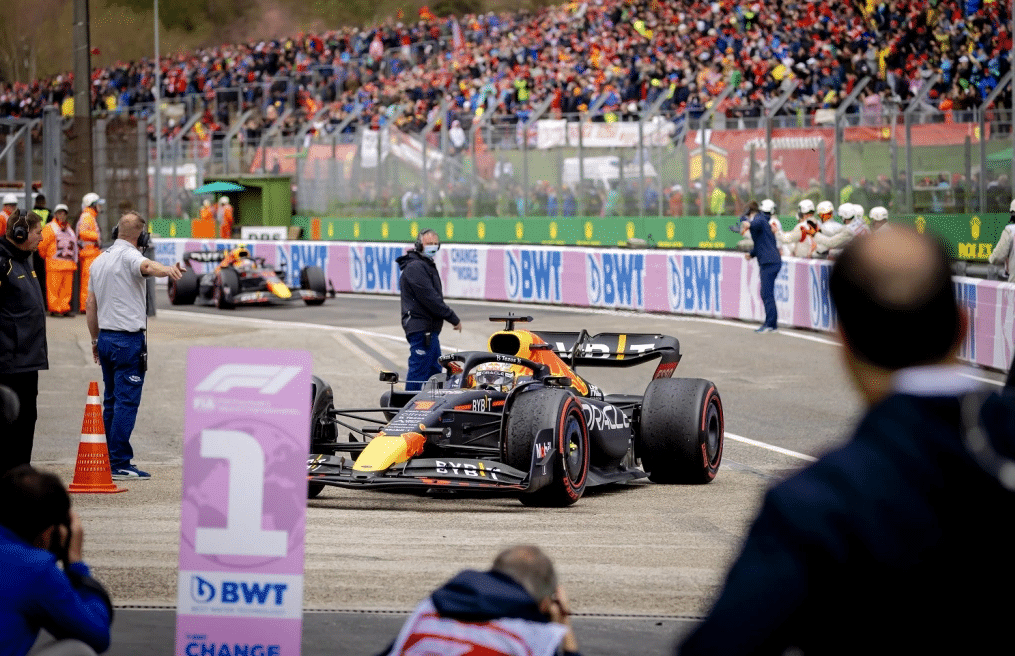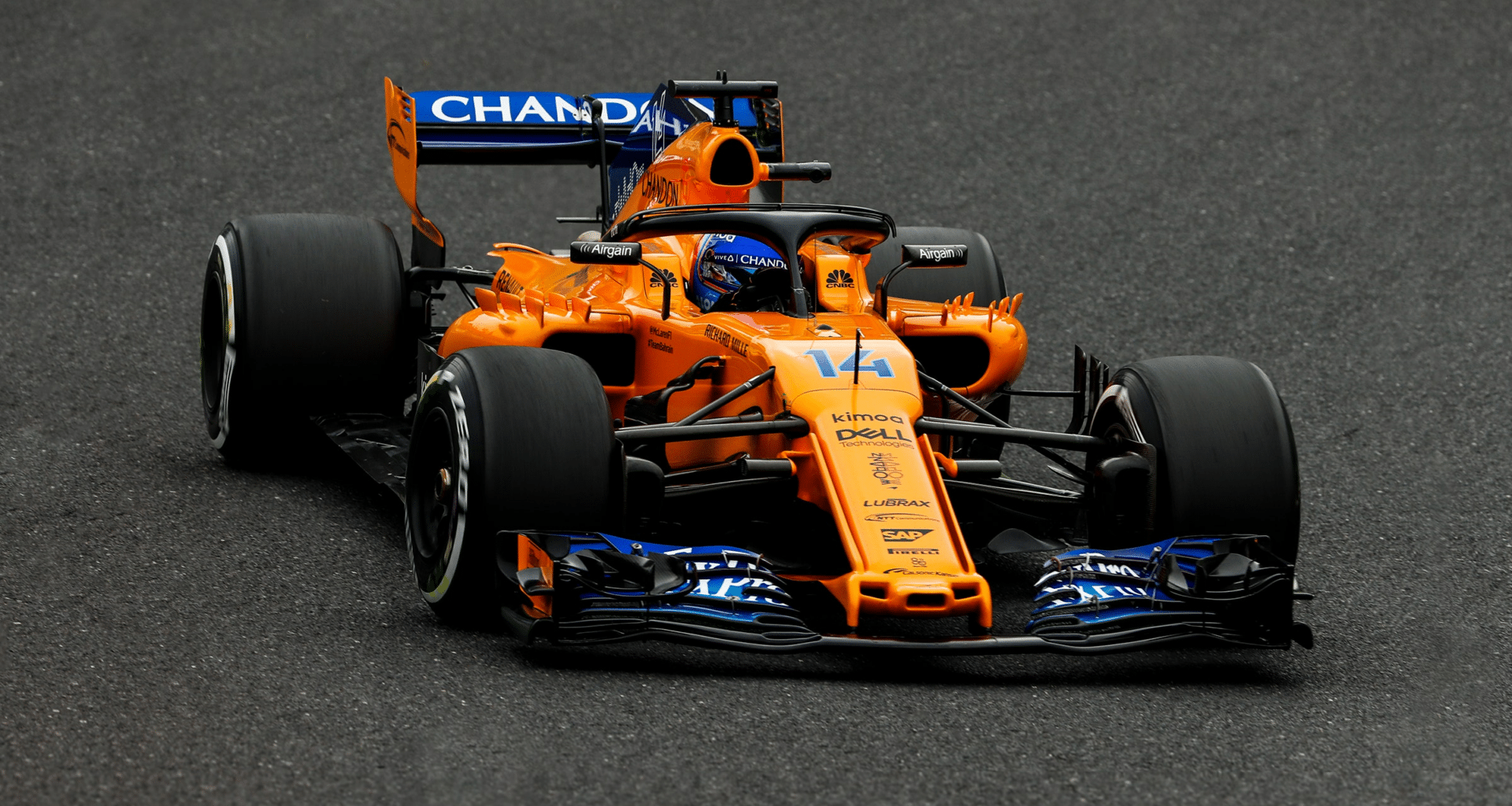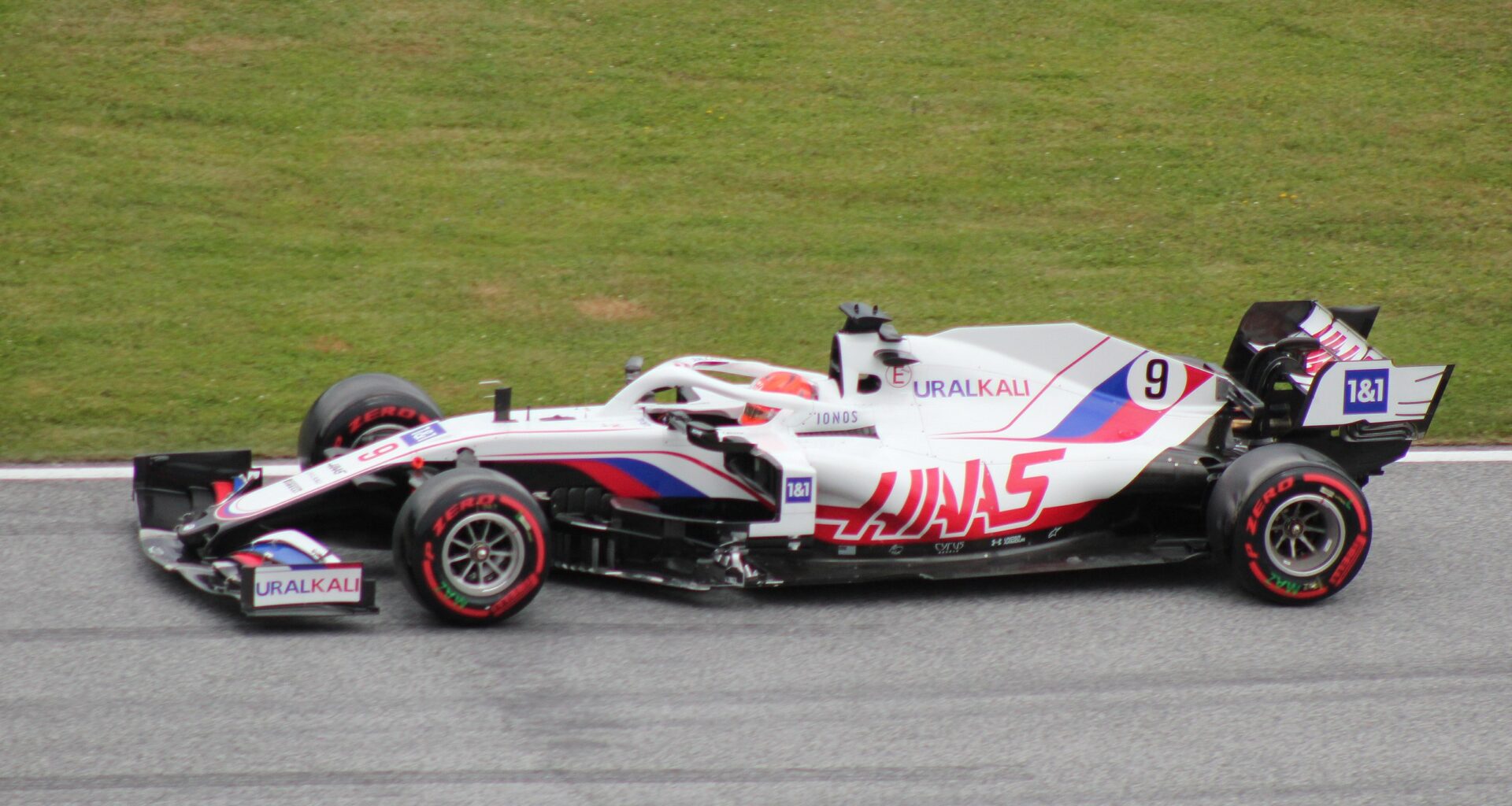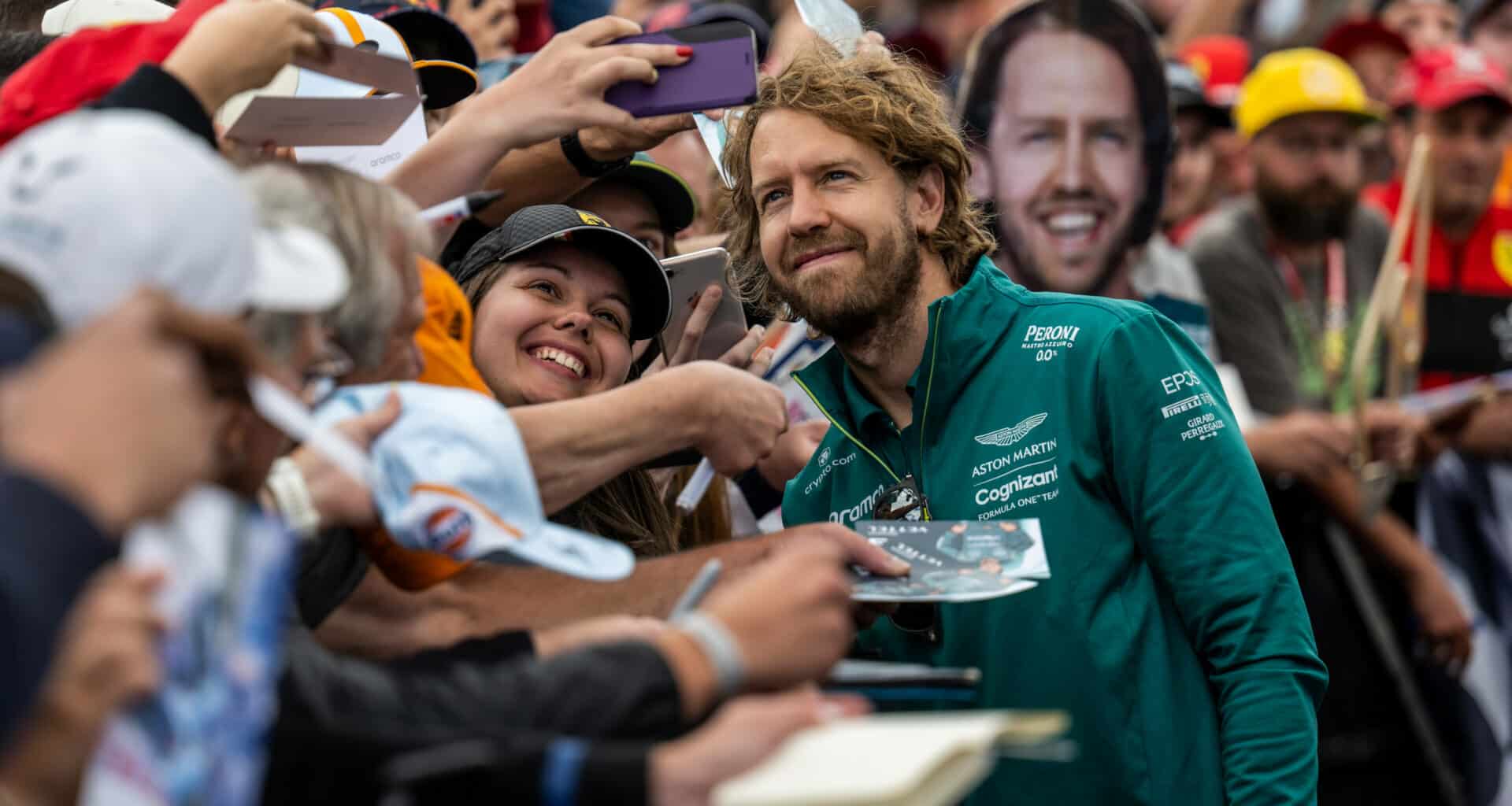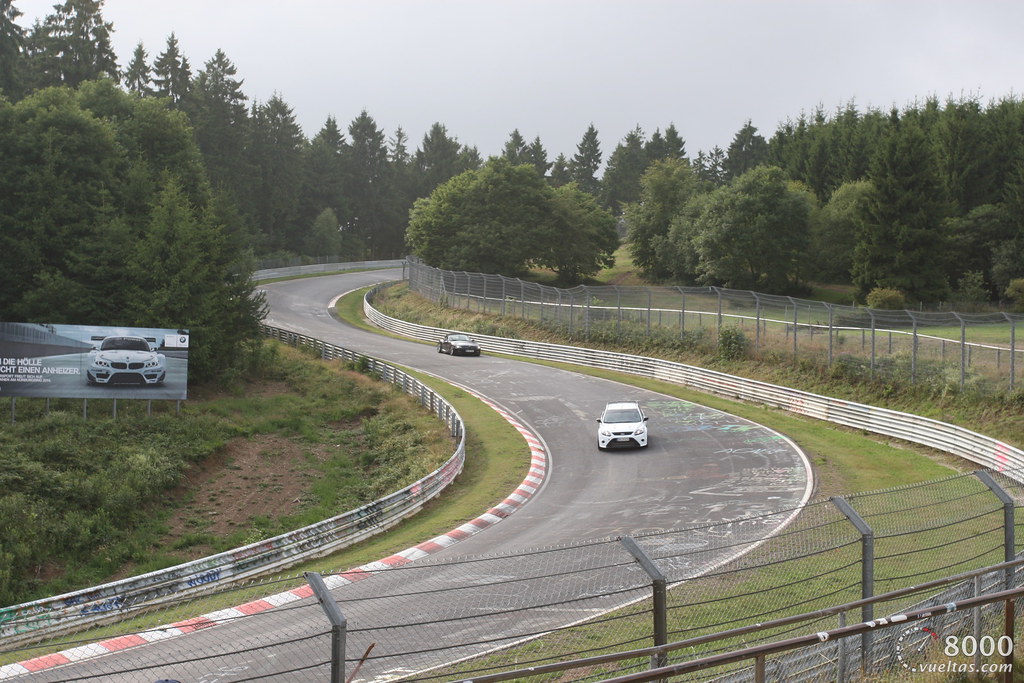Parc Fermé in Formula 1 refers to a cordoned-off zone controlled by the FIA with limited access for teams.
Parc Fermé is a secure area where cars are kept during specific periods of a race meeting, such as after qualifying and before the race.
The main purpose of Parc Fermé is to ensure fairness, safety, and compliance with regulations in Formula 1 races.
Key Points:
- Definition: Parc Fermé is a French term meaning ‘closed park’ and signifies a restricted area where cars are placed under specific conditions
- Regulations: Cars must be placed in Parc Fermé within a set timeframe after qualifying until before the race formation lap. During this time, only minor adjustments like tyre changes and refuelling are allowed
- Importance: Parc Fermé rules are crucial to maintaining the integrity of the sport by ensuring that the car that starts the race is the same as the one that finishes it
- Penalties: Violations of Parc Fermé rules can lead to penalties such as starting from the pit lane or disqualification from the race
Table of Contents
- 1 The History and Origin of Parc Ferme
- 2 Purpose and Significance of Parc Ferme in F1
- 3 Stages of Parc Ferme
- 4 Allowed Modifications During Parc Ferme
- 5 Penalties for Ignoring Parc Ferme
- 6 Regulations and Restrictions Imposed by Parc Ferme
- 7 Permitted and Prohibited Activities in Parc Ferme
- 8 Managing Car Damages and Repairs within Parc Ferme Rules
The History and Origin of Parc Ferme
Parc Ferme was established in 1908, during the early years of motor racing.
The phrase originally referred to a safe location where rally automobiles were kept in good condition after each day of racing.
The importance of Parc Ferme increased as Formula One racing developed, becoming a crucial component of the activity.
Today, Parc Ferme is essential to maintaining the competitive spirit of the race, the fairness and legality of F1 racing, and team plans.
Purpose and Significance of Parc Ferme in F1
Parc Ferme’s main role in Formula 1 is to uphold fair competition between teams and enforce rules.
The sanctioning organization (FIA) makes sure that each team abides by the established rules and regulations by placing limitations on what teams can modify, repair, or replace on their cars during particular periods.
In addition to ensuring the cars’ safety and legality, this promotes creativity and strategic thinking among the teams.
Stages of Parc Ferme
Parc Ferme occurs at three stages during a World Driver’s Championship: the pre-race, mid-race, and post-race Parc Ferme.
Pre-Race Parc Ferme
The pre-race Parc Ferme begins when the competitors exit the pit lane to begin the qualifying session in Q1 and continues until the start of the race. Before the pre-race Parc Ferme, teams will self-scrutineer their race cars and declare them legal. The FIA will hand-pick at least six cars randomly and check them to make sure they abide by the technical regulations.
Mid-Race Parc Ferme
The Parc Ferme conditions apply throughout a race but there is an exception to this rule. If a participant’s car gets into an accident mid-race and requires parts to be replaced, the team would normally have to send a written request to the FIA to receive an approval.
Post-Race Parc Ferme
Immediately after the chequered flag is waved at the end of the race, all racing cars will go to the closed park location near the garages. Once again, the FIA technical department and the FIA scrutineers will begin inspecting the cars to validate the legality of the cars.
Allowed Modifications During Parc Ferme
The Sporting Regulations has 22 subclauses regarding the allowed modifications to a car during the Parc Ferme period. Some of these include starting the car engine, adding or removing fuel, fitting a fuel breather, removing the wheels, taking out the spark plugs, and fitting the cooling or heating devices.
Penalties for Ignoring Parc Ferme
There are two types of penalties when it comes to Parc Ferme: pre-race Parc Ferme penalties, which usually result in a restart from the back of the grid, and post-race Parc Ferme penalties, which might result in full disqualification from the race, and a loss of points as well as the finishing position.
Regulations and Restrictions Imposed by Parc Ferme

Before and after a race, Parc Ferme regulations govern what teams may and cannot do with their cars.
Teams operate under Parc Ferme rules from the qualifying session until the start of the race.
Only certain modifications can be done to the autos during this time.
FIA authorities closely inspect the cars to ensure that the stated regulations are followed.
All vehicles must head straight to Parc Ferme for safety and legality inspections after the event.
Teams are not allowed to make any unlawful changes to the cars during this time.
Usually 1-2 hours later, the cars are returned to the crews for additional examination and upkeep.
Permitted and Prohibited Activities in Parc Ferme
Teams are permitted to perform particular tasks on their cars during Parc Ferme conditions, such as starting the engine, managing the gasoline, maintaining the brake system, changing the tires, and adjusting the front wing.
Aesthetic modifications and onboard camera upkeep are other permitted activities.
On the other hand, it is against the law to modify any auto part, alter the suspension, or unofficially replace gearbox or power unit components.
Rules violations at Parc Ferme can result in disqualification from the race, losing championship points, or starting the race from the pit lane.
Managing Car Damages and Repairs within Parc Ferme Rules
Regulated by Parc Ferme, managing car damage during qualifying sessions can be challenging.
To repair actual accident damage, Teams must submit a written request to the FIA Technical Delegate along with a list of the required replacement parts.
The replacement parts must be both aesthetically and functionally equivalent to the original.
The repairs must be carried out under the designated scrutineer’s supervision.
Notwithstanding the arguments and squabbles surrounding Parc Ferme, it continues to be an important part of Formula 1 racing.
The Parc Ferme regulations support a competitive and fair racing environment in addition to ensuring the cars’ safety and legality.
Teams are therefore urged to use strategic thinking, be creative, and push the envelope while still adhering to set rules.
In the end, Parc Ferme has a significant influence on how Formula 1 racing is conducted today.
